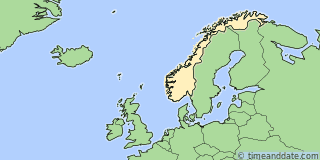26 Eki 2025, 03:00
25 Mar
Forward 1 hour
25 Mar 2018 - Daylight Saving Time Started
When local standard time was about to reach
25 Mart 2018 Pazar, 02:00:00 clocks were turned forward 1 hour to
25 Mart 2018 Pazar, 03:00:00 local daylight time instead.
Sunrise and sunset were about 1 hour later on 25 Mar 2018 than the day before. There was more light in the evening and less light in the morning.
Also called Spring Forward, Summer Time, and Daylight Savings Time.
28 Eki
Back 1 hour
28 Eki 2018 - Daylight Saving Time Ended
When local daylight time was about to reach
28 Ekim 2018 Pazar, 03:00:00 clocks were turned backward 1 hour to
28 Ekim 2018 Pazar, 02:00:00 local standard time instead.
Sunrise and sunset were about 1 hour earlier on 28 Eki 2018 than the day before. There was more light in the morning and less light in the evening.
Also called Fall Back and Winter Time.
More info:
Europe Ends DST—Possibly for Last Time
Juncker: EU Will Scrap Clock Changes
When Does DST Start and End in Norway?
The DST period starts on the last Sunday of March and ends on the last Sunday of October, together with most other European countries.
Both continental Norway, which includes the capital Oslo, and Svalbard, a Norwegian archipelago in the Arctic Ocean, use Central European Time (CET) as standard time. When Daylight Saving Time (DST) is in force, Central European Summer Time (CEST) is observed.
Daylight Saving Time History in Norway
- Norway first observed Daylight Saving Time in 1916.
- Norway has observed DST for 60 years between 1916 and 2025.
- Previous time with no Daylight Saving Time was 1979.
- See Worldwide DST Statistics
Daylight Saving Time has been introduced, discontinued, and re-introduced quite a few times during the 20th century. When the measure was reinstated in 1959, controversy erupted, so in 1965, DST was again abolished. However, it was re-introduced in 1980. Today, Norway follows the EU’s daylight saving schedule.
